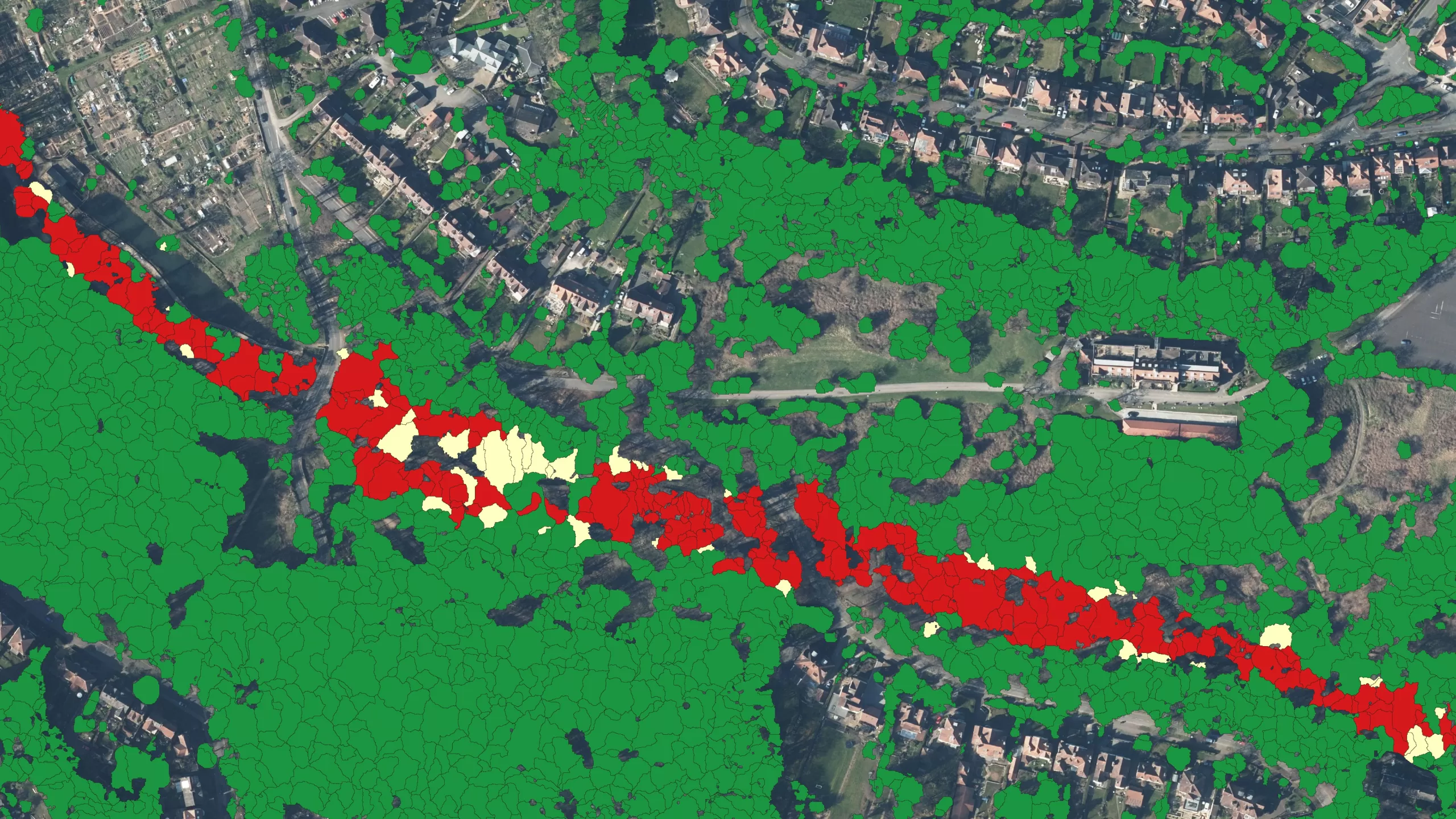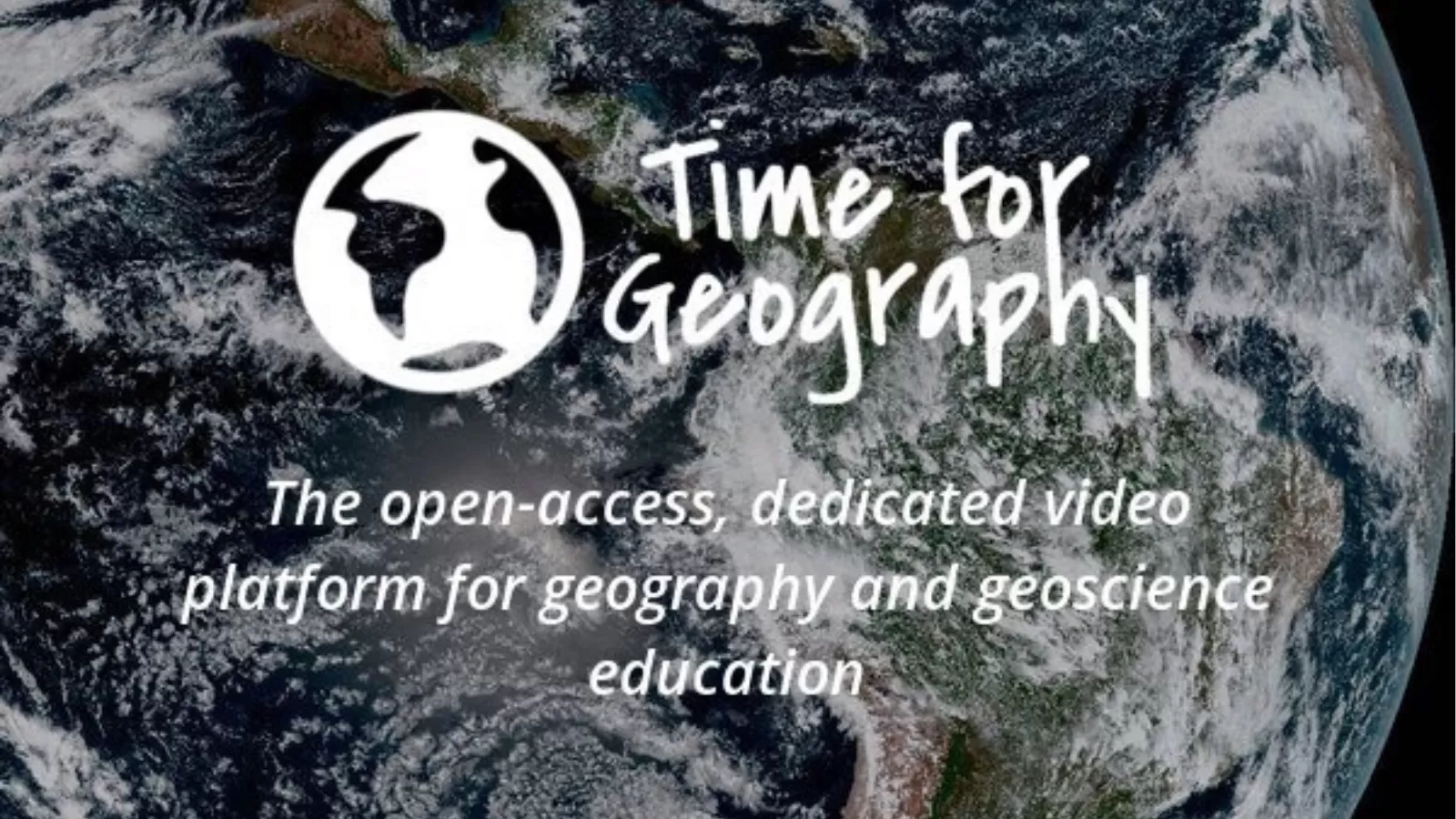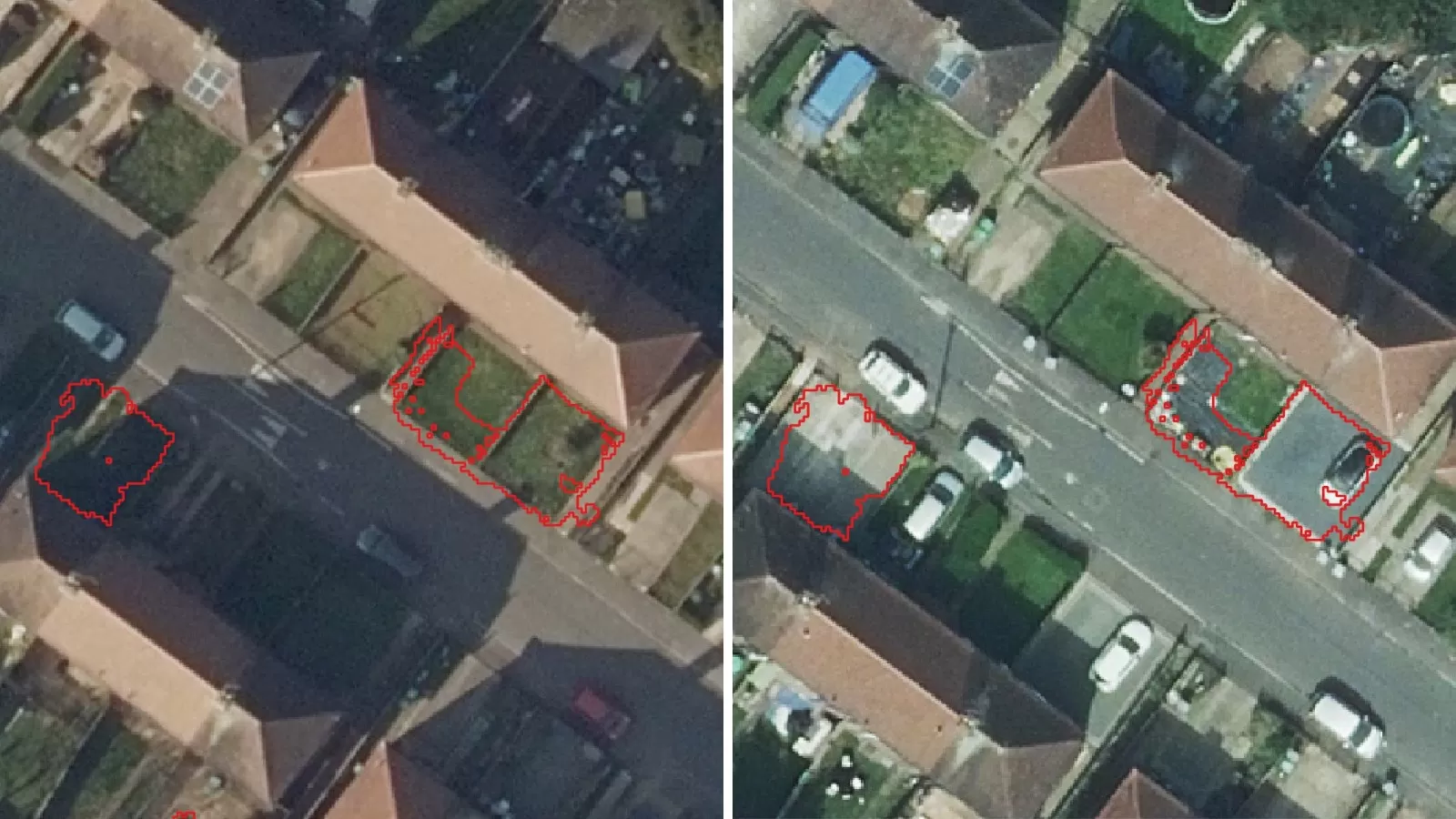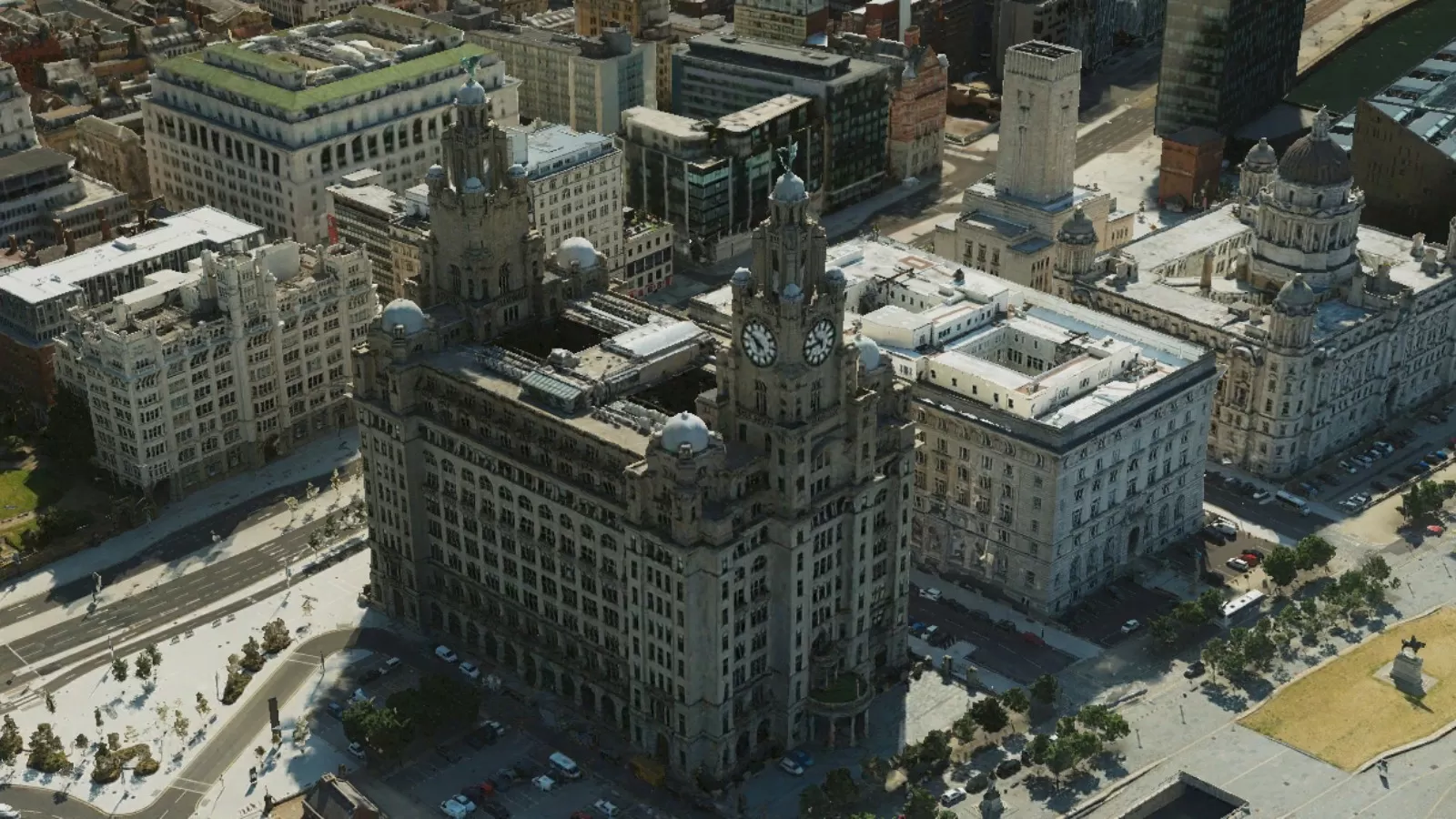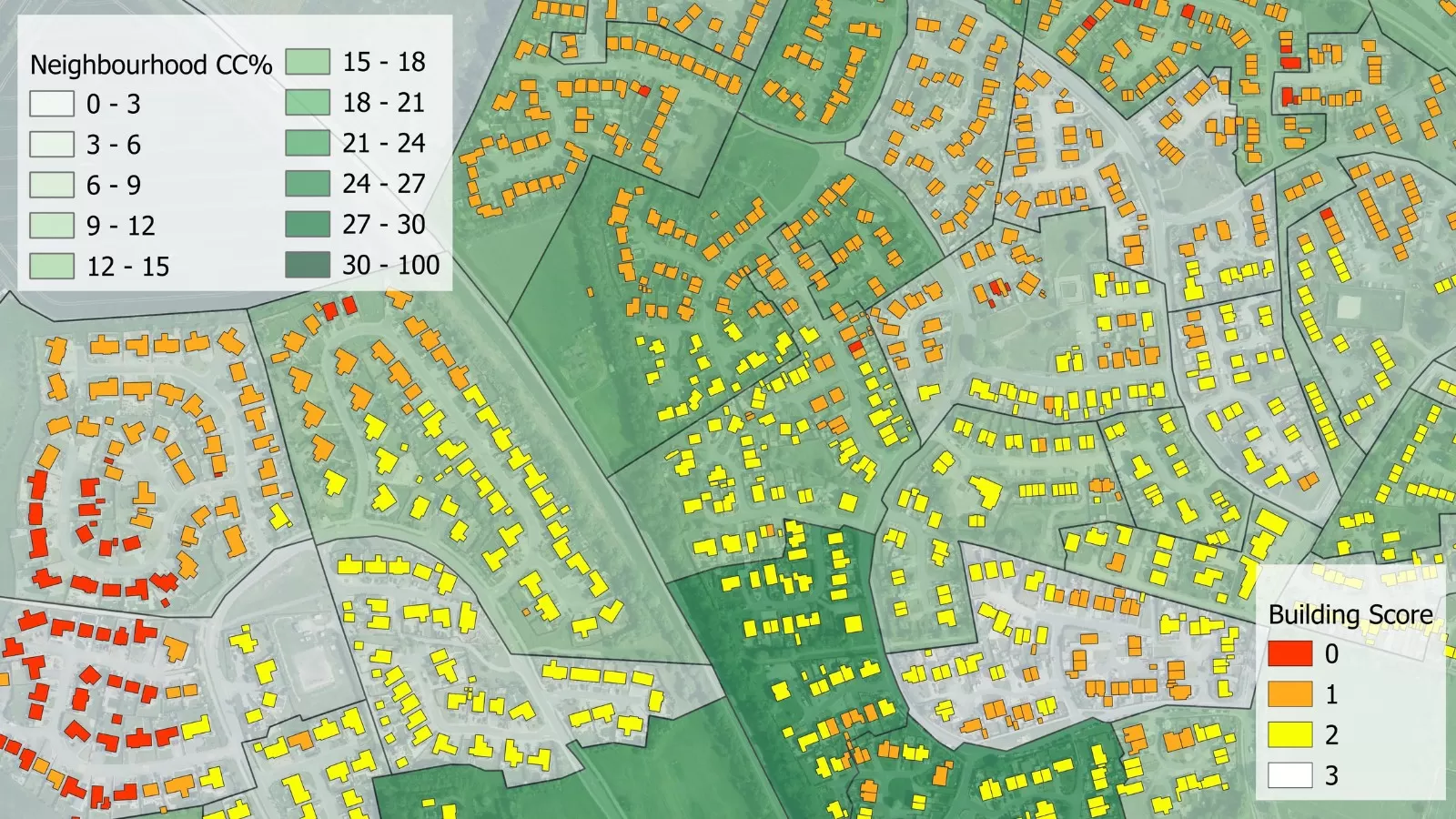
- 3+30+300 research rule applied to support health, housing, infrastructure and green space strategies
- Analysis visuals support resident engagement activities
- 3+30+300 analysis created using GB’s only comprehensive tree mapping dataset
Aberdeenshire Council has been working with Bluesky International to assess residents’ access and proximity to trees and green spaces using a new analysis service that applies the increasingly popular 3+30+300 research rule.
The Council has found the visual representations Bluesky has been able to provide using 3+30+300 analysis and the National Tree Map™ (NTM™) data, has helped facilitate a wider discussion with local communities about the importance of urban trees, with clear representations of tree and green space locations.
In recent years, urban design has seen a shift to include sustainability, livability, and urban greening. Studies have shown that access to nature in urban environments has positive impacts on both physical and mental health, as well as the natural environment. Identifying areas to increase urban greening and provide an equitable distribution of tree and green space cover is becoming increasingly important in a bid to make our urban areas resilient, healthy, and sustainable.
3+30+300 was introduced in 2021 by Cecil Konijnendijk, co-founder of the Nature Based Solutions Institute, and has since gained considerable traction with urban planners and environmentalists. It provides a guideline for urban greening, recognising the need for everyone to realise the benefits of living and working within a certain proximity to trees and urban nature.
In simple terms the rule states that there should be three trees in line of sight, 30 per cent canopy coverage, and green space within 300 metres of all residential and workplace buildings.
Understanding and monitoring the environment is becoming increasingly critical as we strive to reduce our carbon output, assess carbon capture opportunities, and enhance our natural environment. It is critical that schemes achieve maximum impact, whether they are tackling the climate crisis, improving the permeability of the landscape, or increasing biodiversity.
Fiona Chirnside, an Environmental Planner at Aberdeenshire Council, said: “We have applied the analysis from Bluesky, which uses the 3+30+300 rule in conjunction with their NTM™ data, for cross-service discussions specifically for the Inverurie area, as part of the development of a corporate place plan for the settlement.
“Services from across the Council, even those who perhaps wouldn’t necessarily see trees or green spaces as part of their remit, can benefit from this information whether it’s for future project planning, resident engagement, or grant applications. We have had interest from colleagues in our Roads and Education teams and from our Health & Social Care Partnership and using the 3+30+300 analysis has meant we can demonstrate the impact location to trees and green spaces can have, especially when we overlay with our social economic data.”
Cllr Sarah Dickinson, chair of Aberdeenshire Council’s Sustainability Committee, added: “Greenspaces and trees provide us with so many environmental benefits and that alone is reason enough to be excited about this project. But we often overlook the amazing benefits for ourselves – our health and wellbeing – that these spaces provide. Access to nature is so important: for our mental health, for our air quality, to be able to take part in outdoor physical activity, and that is what makes the focus of this project so special.”
Residents in particular have found visuals produced from the analysis useful, enabling them to clearly understand tree cover, in turn enabling discussion and increasing interest in trees.
Eleanor Munro commented: “The 3+30+300 analysis visuals have significantly boosted our ability to engage with the community and, working together, they will help identify suitable tree planting locations in the town that will align to the rule for the benefit of the community.”
Ralph Coleman, Chief Commercial Officer at Bluesky added: “When we discovered Cecil Konijnendijk’s research rule, we quickly realised how data from our NTM™ could be used to create an analysis service offering fast and accurate visuals depicting the distances from prescribed residential areas to trees and green spaces. Our NTM™ data is the only comprehensive tree mapping dataset to capture trees 3 metres and taller across Great Britain and the Republic of Ireland and this has enabled us to be the first to offer national 3+30+300 analysis as a service. The outputs, based on existing data sources, are produced rapidly providing local authorities, housing developers and environmental consultants the efficiency required to deliver an effective service.”




